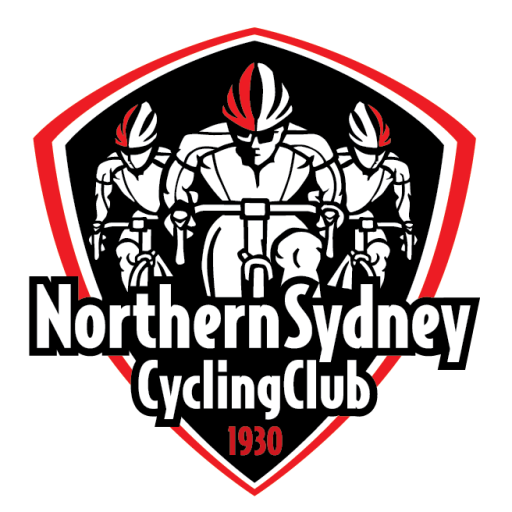-
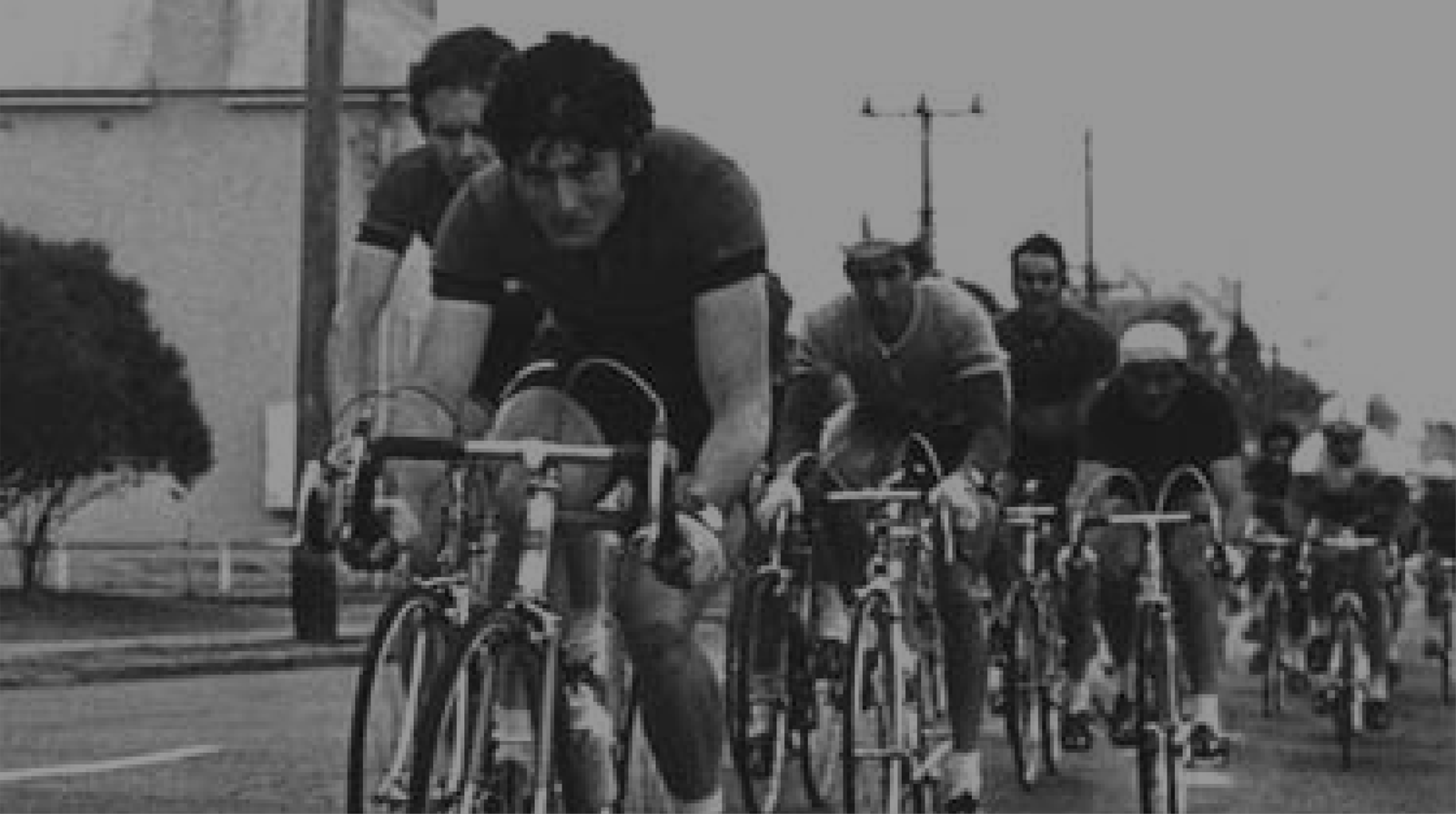 EST. 1930NSCC
EST. 1930NSCC
CLUB INFO
We are a road cycling club based around the Thornleigh and Hornsby areas of Sydney’s North Shore. We are a social and road racing club with a history dating back more than 70 years. We run regular criterium road races on Sundays and public holidays at Beaumont Road, Mt Ku-ring-gai; all grades are catered for. Riders must be a member of an ACF affiliated club such as ours to race. Club members also meet for regular bunch training rides throughout the week and weekends and anyone is welcome to join in and meet other club members. Riding in bunches is a great way to meet other cyclists, stay motivated and learn the bicycle skills necessary to ride safely on the roads and in race situations. If you are interested in joining our cycling club then go to our Membership page for more detailed information.
The current Northern Sydney Cycling Club has its foundations in two clubs: the Hornsby Districts Amateur Cycling Club and the Northern Suburbs Amateur Cycling Club, both of which were established around 1930 when cycling was very popular in Australia. Both clubs were based at local cycling stores: Harry King Cycles in Railway Street, Hornsby; and Lynch & Gray Cycles on the Pacific Highway at Crows Nest which was run by a widow, Mrs Lynch, and her business partner Ken Gray.
Before World War II, the Hornsby club did not admit juvenile riders, so youngsters had to join the Northern Suburbs club.
Racing before the war was on courses such as the 20 mile out-and-back from Jersey Street in Hornsby to Peats Ferry (there was no Hawkesbury River Bridge in those days!), or track cycling on a board track at Riley Street in the city, which was eventually torn down and used as a storeroom during the war. After that, Norths and Hornsby riders would travel to the Henson Park track at Newtown. Not many people had cars in those days, so the riders would cycle out on their road bikes with their track bikes slung over one shoulder, hopefully finding a passing truck or car to hang on to along the way. Cars were not usually available to transport riders to opens such as the Goulburn to Sydney either, and in the late 1930s and early 1940s, race entries included a rail concession so that racers could travel to Goulburn on the train with their ‘machines’, and race back. Interestingly, the prize list for 1941 also included one pair of ‘Elasta-top’ plus fours for the “competitor whom the officials consider the most unfortunate rider”. Road laws made it compulsory for all bikes to be properly equipped with ‘bell, brake and reflector’, or racing was not allowed.
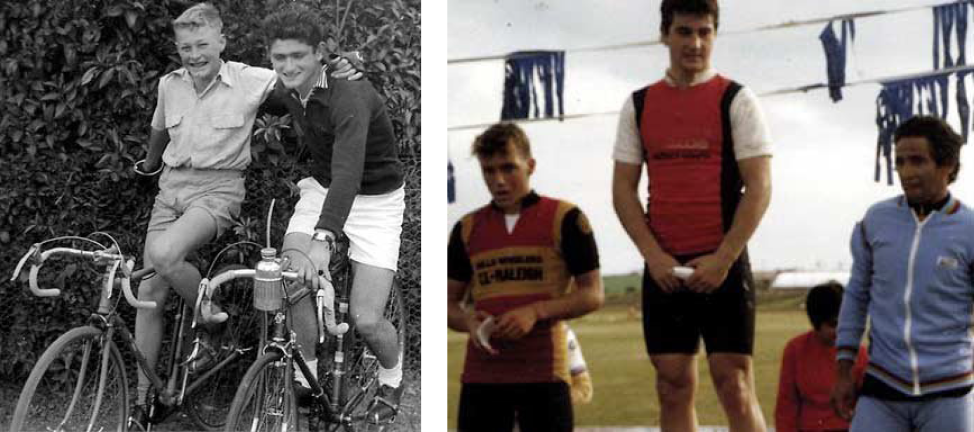
During World War II, both clubs shut down for some years – Hornsby in 1939 and Northern Suburbs in 1942 – as the call for volunteers depleted their ranks. Hornsby re-commenced in 1946 and Northern Suburbs in 1948. Each club had around 50 – 60 members. Although traffic was sparse all those years ago, police were not very cooperative and preferred to turn a blind eye rather than give formal approval for race circuits. After the war, courses included a loop from Ethel Street in Hornsby, down Galston Gorge and back through Pennant Hills, and from Turramurra down to Bobbin Head, up the Mt Colah side and back along the Highway to Turramurra. The record for this ride for many years was 43 minutes, held by Max Tunbridge (some of you may know Max or his son Cameron). Time trials started in Memorial Avenue, St Ives, as did road races along Mona Vale Road to Forest Way, Wakehurst Parkway to Narrabeen, Pittwater Road and back up Mona Vale Road, or further onto Bayview and McCarr’s Creek Road, or even around Coal & Candle Creek (Illawong & Akuna Bay) depending on the distance required for the race. An annual 100 mile (160km) road race went from St Ives out to Maroota and Wiseman’s Ferry, even incorporating some sections of dirt!
In 1954 the Hornsby club, through contacts, realised an alliance with the fledgling Italian-based A.P.I.A. Club, which wanted cycling to be one of the sports it supported (A.P.I.A. stands for Association Polisportive Italo-Australian). In 1956, A.P.I.A became the official sponsor of the club, which was renamed ‘APIA-Hornsby’. Around $1000 was provided by A.P.I.A. for the cycling club, mainly going toward prizes and trophies. Cycling then was divided into amateur and professional ranks and amateurs could not accept prize money or they would be classed as professionals and not allowed to race as an amateur again. Instead, amateur winners and placegetters were offered a dazzling array of prizes from silverware to luggage, appliances, crockery and glassware. The APIA-Hornsby club sponsored the Goulburn to Sydney in 1958 and 19 59, and staged the annual ‘APIA 100’ race (Leichhardt to Springwood and return with a KOM at Hawkesbury Lookout, 1967-70) which attracted big fields.
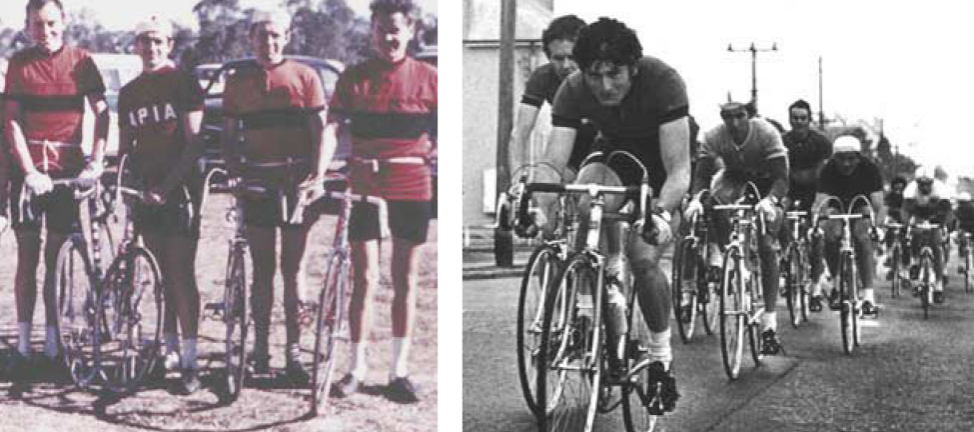
Although the strongest Sydney club in the late 1950s was Enfield-Burwood, Hornsby riders would run themselves ragged just to beat Northern Suburbs riders in open races. A perceived class distinction had developed, with some of the Hornsby riders viewing themselves as ‘working-class’ pitted against the ‘high society’ boys from Northern Suburbs.
In the mid-70s, support from the A.P.I.A. club waned, and the two cycling clubs were drawn together, eventually merging. Although the new club was named the Northern Suburbs Amateur Cycling Club (despite resistance from members), it was in fact largely made up of Hornsby riders. The old Northern Suburbs club effectively folded, with members mostly joining Enfield-Burwood, although some were to return in later years. This is the club which has survived to this day and is now known as the Northern Sydney Cycling Club – although there have been several sponsor changes and breakaway groups over the years. Throughout its history, the club has always attracted and developed good riders. Ernie Greig was Northern Suburbs road champion from 1930-36 and went on to become professional, recording a string of Australian and international victories. Others include Ernie Jackson (who was also Hornsby’s club secretary for 15 years), Eddy and Claudio Spessot, Bernard Vanechop, Max Tunbridge, John Graydon and Austin Danelutti. A notable rider of the 50s and 60s was Kenny Latta (APIA Hornsby), who, despite a serious head-on accident with a truck when he was in his early twenties, managed to make a good enough comeback after a few years to ride in Britain’s Milk Race. In the 1970s and 1980s top riders included Rob Lagden, Daniel Vanechop (son of Bernard), and Mark and David Spessot (sons of Eddy), both of whom represented Australia, David gaining a fifth place in the 1,000m Junior World Championships in 1989.
Editorial comments from Danielle Duyckers. Apologies for any errors or omissions. Many thanks to Eddy Spessot and Ernie Jackson for taking time to tell me their stories and for digging out all the material they have kept over the years. A hint: don’t throw out your old race programs, in thirty years’ time they’ll be really interesting to the next generation! – Photos: Claudio Spessot
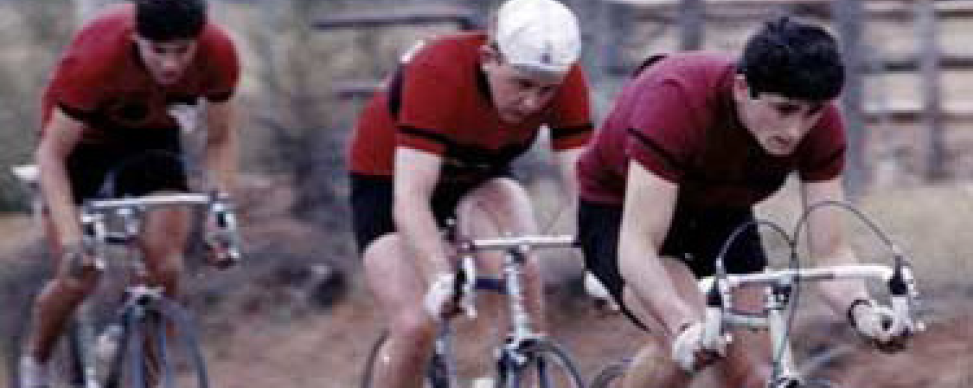
President
Deb Ainslie
president@northernsydneycyclingclub.org.au
0413 802 970
Vice President
Craig Stevens
vp@northernsydneycyclingclub.org.au
Secretary
Ed Kirk
secretary1@northernsydneycyclingclub.org.au
0407 173 711
Road & Race Coordinator
Owen Cooke
Treasurer
Alan Leech
accounts@northernsydneycyclingclub.org.au
Junior Coaching & Development
Helmut Vetisch
vetisch@optusnet.com.au
0473 180 096
Mountain Biking Co-ordinator
Matthew Roberts
mtb@northernsydneycyclingclub.org.au
Womens Co-ordinator
Allison Thomas
women@northernsydneycyclingclub.org.au
0468 360 522
Communications
Nikos Andronikos
comms@northernsydneycyclingclub.org.au
The Club is an Incorporated Association (Incorporation Number Y0368915 / ABN 30 921 045 808). The committee meets on the 2nd Wednesday of every 2nd month. If you wish to raise any matters with the Committee, please email the Secretary to request the matter be placed onto the meeting agenda.
The Club’s Constitution can be downloaded here.
